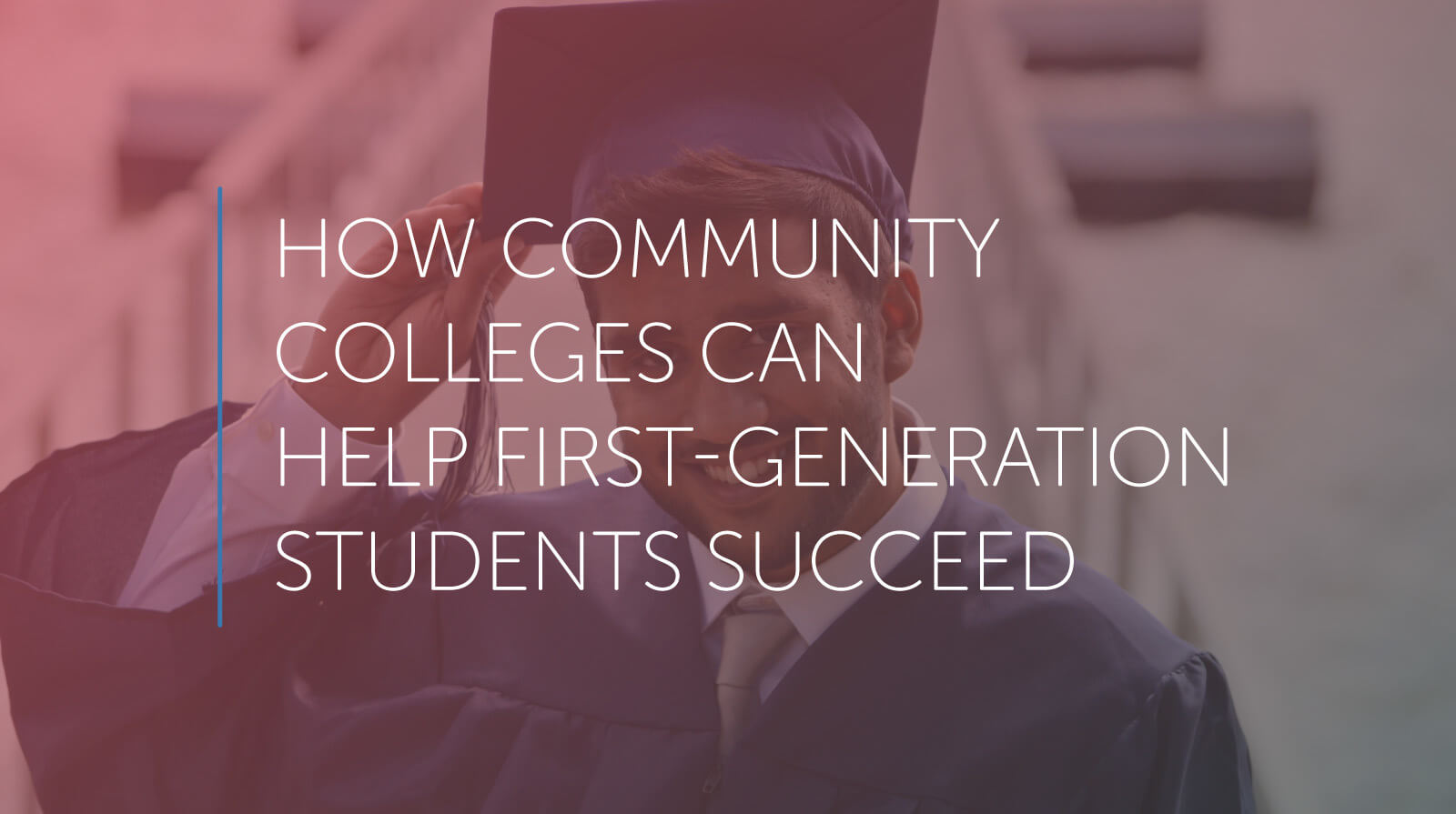Breaking down barriers for first-generation college students
According to the Community College Research Center, 38 percent of students whose parents did not graduate from college choose community colleges as their first institution. Unfortunately, first generation students struggle to complete their degrees, with less than a third eventually graduating. That’s why the new whitepaper published by NASPA caught our attention this month.
The report, First-generation Student Success: A Landscape Analysis of Programs and Services at Four-year Institutions, provides a detailed look how academic institutions are serving first generation students. The result is a thought-provoking compilation of perspectives from faculty, students, nonprofit leaders, and administrators in almost three hundred institutions. There are also a few profiles of approaches that seem to be effectively helping first generation students succeed. The result is a hugely important body of research and set of recommendations.
Shedding assumptions about students
First-generation students struggle with many challenges but stereotypes only make things worse. It’s true that these students often stand at the intersection of many types of disadvantage. For instance, first-generation students may also be undocumented, low-income, or from a minority group. All of these identities create other barriers and burdens inside academia. The authors of the study call first-generation students with additional disadvantages “First-gen Plus” students.
However, not all first-generation students are multiply disadvantaged, and assuming that they are leads to gaps in services or support programs. For instance, if the school connects first-generation students with support services through the financial aid office, those that do not need financial aid may be forgotten. Aligning first-gen initiatives with academic affairs might produce better results, which is why schools should embrace the diversity of this large demographic and resist limiting stereotypes.
Building an engaged community
First-generation students succeed when they are part of a supportive community. Creating that community requires partnering with faculty, students, families and administration to provide essential mentorship, social support, and sustained wrap around services. First-generation students contributing to the NASPA report said that they largely succeeded because they felt connected to a specific mentor, underscoring the importance of strong connections with faculty.
Connecting students with these mentors and advocates is essential. Faculty responsible for first generation programming can become key contacts for students throughout their studies and powerful role models. Advisors are an invaluable resource in navigating student life, helping students adjust and find support services when needed. Finally, students themselves can support and advocate for other students. Seventy-four percent of cohort-based programs offer a peer mentoring component to first-gen students.
Celebrating first-generation students
The NASPA report revealed that many of the educators and administrators responding to the report were already engaged in efforts to create campus cultures that celebrate first-generation students. In the words of Leslie Pendleton, Senior Director of Retention and Success Initiatives at the University of Florida: “We need to help first-generation students understand the assets they bring to the academy, their job, and society so that they can begin to see that being an outsider is an asset.”
Adopting the asset-based view means highlighting the many outstanding qualities first-generation students bring to college, like ambition, resilience, and determination. To celebrate first-generation students some schools have created t-shirts, academic cords or stoles for graduation, hosted special events, or even designed targeted curriculum. Schools have also offered additional training for faculty and staff. Colleges need to help first generation students feel confident and seen within academia so that they can persist.
Conducting institutional assessments
The colleges in the study were largely able to identify first-generation students during matriculation. Eighty percent of schools did so. Yet, only 61 percent track data about first-generation student success and a mere 41% use that date to inform their institutional offerings for other first-generation students. Schools did not even use uniform definitions of who counts as a first-gen college student, with some reporting that they didn’t even know if their institution had a definition.
Because schools don’t have the infrastructure in place to collect, evaluate or share data about first-generation students, it can be difficult to know what strategies are working. Without being able to compare outcomes between institutions or track programs, schools cannot design informed interventions. Where resources permit, schools would do well to invest in further research.
The differences between two and four-year institutions
We think that many of the recommendations in the report offer productive avenues for community colleges to explore. Still, the authors of the report explicitly caution that they found significant differences in the ways that two-year and four-year institutions experience serving large populations of first-generation students. Because of that, NASPA is launching a new study of specifically two-year institutions.
For now, community colleges will continue the work of supporting first-generation college students to the best of their ability. Persistence and completion rates among these students remain troublingly low, even after controlling for other factors (Choy, 2001). Pending further research on first-generation students in community colleges, the fresh insights from NASPA’s report are an excellent resource for administrators.
References
Sarah E. Whitely, Ph.D., Grace Benson, Alexis Wesaw (2018). “First-Generation Student Success: A Landscape Analysis of Programs and Services at Four-Year Institutions.” NASPA Student Affairs Administrators in Higher Education. Retrieved from https://firstgen.naspa.org/2018-Landscape-Analysis
Choy, S. P. (2001). “Students whose parents did not go to college: Postsecondary access, persistence, and attainment.” The Condition of Education (NCES 2001-126). Washington, D.C.: National Center for Education Statistics. Retrieved from https://nces.ed.gov/ pubs2001/2001126.pdf
Community College Research Center. “Community College FAQs.” Retrieved from https://ccrc.tc.columbia.edu/Community-College-FAQs.html


